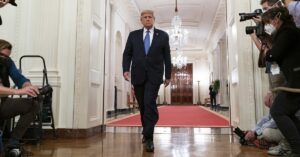Justice shift: new Justice Department rules target journalist protections
The Justice Department, under Attorney General Pam Bondi, is taking significant action to address unauthorized leaks to the media, drawing attention by altering protections for journalists.
Efforts now involve using various legal means like subpoenas, court mandates, and search warrants to compel reporters to release information, signaling a stark departure from the previous administration’s policies.
A memo from Bondi announced these new guidelines, effectively rescinding existing safeguards enacted during President Biden's tenure that prohibited secretly seizing journalists' communication records. The revised regulations mark a profound change, now demanding that news organizations comply with Justice Department-approved subpoenas. Prosecutors can now legally compel journalists to release details and provide testimony in leak investigations.
Tightening Measures Against Leaks
Among the changes, journalists are promised advance warning of impending investigative actions, and any warrants issued must strictly restrict unnecessary intrusion into journalistic material. This alteration comes at a time when the administration under President Trump is focusing on protecting its policies and interests, with Bondi highlighting the administration’s intolerance for leaks that jeopardize governmental operations and security.
The Trump administration has voiced concerns over repeated leaks concerning internal reflections and intelligence discussions, further driving this initiative. Notably, several criminal referrals have been made due to intelligence leaks, as indicated by Director of National Intelligence Tulsi Gabbard.
These steps have their roots in past practices, although adjusted over time. The 2013 instance involving Eric Holder informing the Associated Press about surreptitious phone record acquisitions prompted the creation of stricter leak processes, demanding higher-level permissions for subpoenas.
Journalism's Essential Protections Examined
Bruce Brown from the Reporters Committee for Freedom of the Press reacted, asserting that protections for the press are fundamental for maintaining public information flow. He referred to historic U.S. reporting milestones like Watergate, emphasizing their reliance on journalists' freedoms to shield source identities and deliver pivotal news.
The recent policy reversals echo longstanding tensions, as earlier safeguards were reinforced by Merrick Garland during the Biden era following revelations of governmental access to journalists' phone records. Succession of these practices can be traced through various presidencies, showing a consistently complex dynamic between national security concerns and press freedoms.
The new policy laid out by Bondi launches during a period of particular vigilance from the Trump administration, amidst incidents like National Security Adviser Michael Waltz's accidental inclusion of a reporter in a confidential chat, and scrutiny over Defense Secretary Pete Hegseth’s use of encrypted communications for sensitive conversations.
Balancing Freedom and Security
Attorney General Bondi maintains that the Department will weigh the existence of a probable cause for criminal acts before deploying invasive measures. Additionally, prosecutors are urged to seek other possible evidence sources and to engage with involved journalists before demanding information release.
This strategic pivot spotlights a continuing debate over journalism freedom versus national security measures. While the administration seeks to prevent leaks that threaten policy integrity, journalism advocates persist in underscoring the necessity of robust press protections for democracy.
As these new regulations come into set motion, the complexities of balancing free press advocacy against security imperatives will remain at the forefront of legislative and societal discourse, impacting how journalists operate and how the public remains informed.




